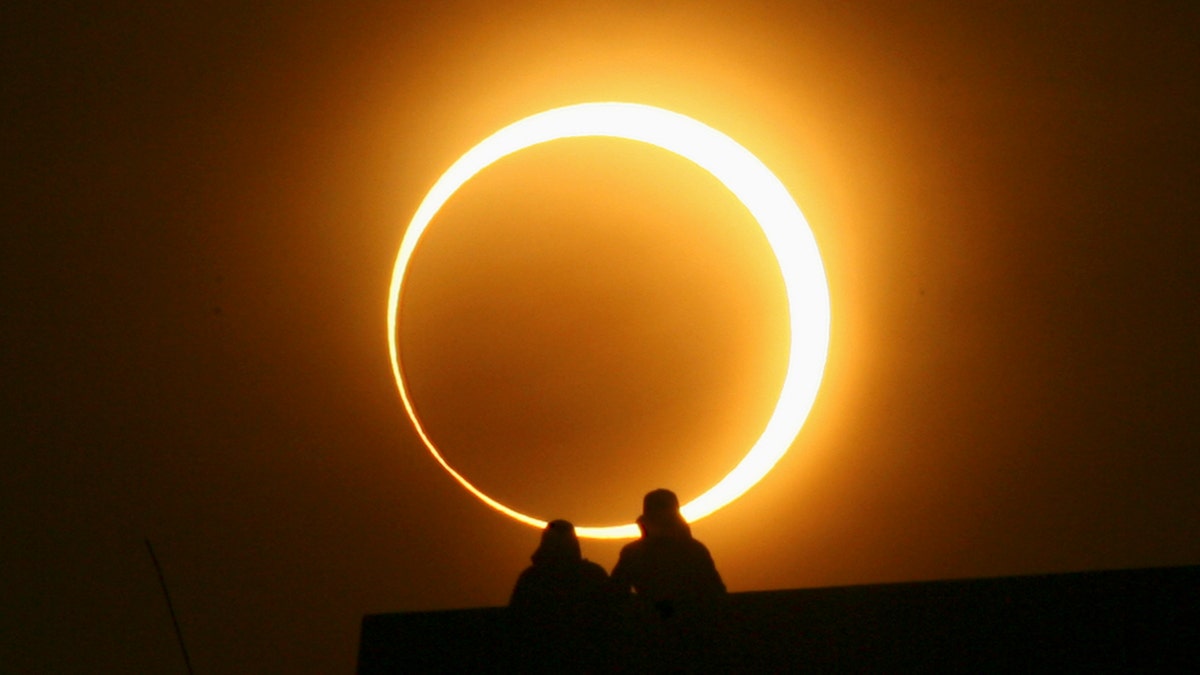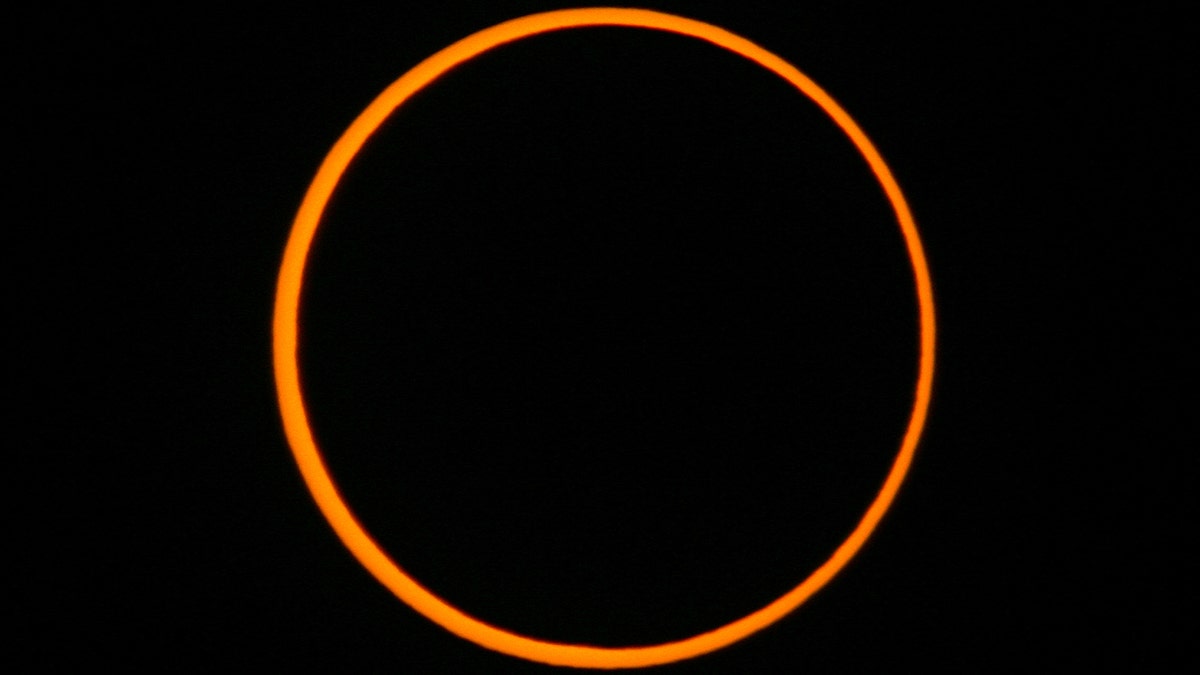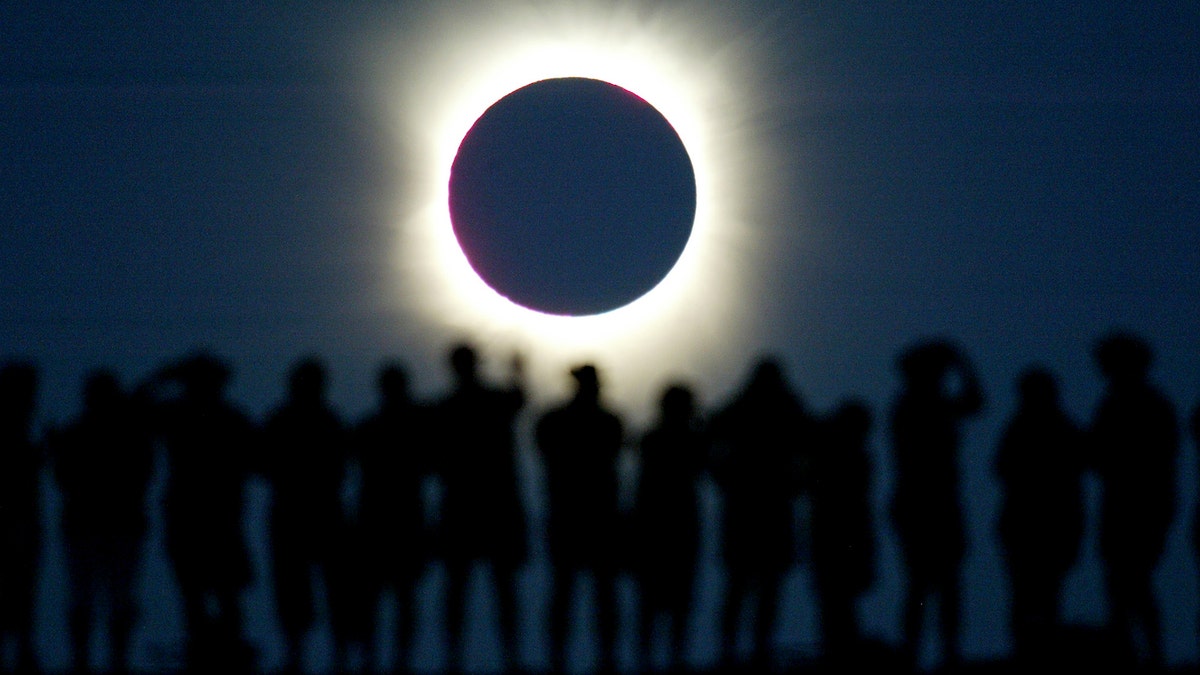Solar eclipse 2017: The science behind total solar eclipses
Astronomy experts from the Liberty Science Center explain the history and science behind total solar eclipses
On Monday, millions of Americans will be celebrating the solar eclipse. But throughout most of human history, an eclipse was something to fear. The gods were angry, and who knew what would happen next?
The earliest recorded solar eclipse was in China in 2137 B.C. The people got scared, believing a dragon was trying to devour the sun. They banged drums and shot arrows to chase it away.
The sun came back, so apparently the strategy worked. But things didn’t work out so well imperial astronomers Hsi and Ho. In fact, the Emperor was so angry they didn’t warn him of the event that he had them beheaded.

A total solar eclipse occurs over Svalbard March 20, 2015. A partial eclipse was visible on Friday, the first day of northern spring, across parts of Africa, Europe and Asia. The total eclipse of the sun was only visible in the Faroe Islands and the Norwegian archipelago of Svalbard in the Arctic Ocean. REUTERS/Haakon Mosvold Larsen/NTB scanpix ATTENTION EDITORS - THIS IMAGE HAS BEEN SUPPLIED BY A THIRD PARTY. IT IS DISTRIBUTED, EXACTLY AS RECEIVED BY REUTERS, AS A SERVICE TO CLIENTS. NORWAY OUT. NO COMMERCIAL OR EDITORIAL SALES IN NORWAY. NO COMMERCIAL SALES.? - RTR4U5BH (REUTERS)
Another one of the earliest recorded solar eclipses comes from Mesopotamian records in 1375 BC (though there is some dispute over the date). It was in Ugarit, a city in Northern Syria. Historians of the time noted the sun was “put to shame.”

Sometimes people saw a solar eclipse as a warning, and changed their ways.
According to Greek historian Herodotus, the Medes and the Lydians had been fighting a war for six years. Then, in the midst of a battle (which modern historians date to 585 B.C.), the sun went dark. The warriors knew an omen when they saw one, and immediately declared a truce.

Two men sit on a bridge to watch an annular solar eclipse in Zhengzhou, Henan province, January 15, 2010. The longest, ring-like solar eclipse of the millennium started on Friday, with astronomers saying the Maldives was the best place to view the phenomenon that will not happen again for over 1,000 years. REUTERS/Donald Chan (CHINA - Tags: ENVIRONMENT SOCIETY) - RTR28W1C (REUTERS)
Scripture mentions a number of eclipses. Perhaps the most famous is when Jesus was crucified. As Luke 23:44-45 puts it: “...there was a darkness over all the earth [...] And the sun was darkened.” Some have claimed this comes from an eclipse that occurred in 29 A.D.
Skipping ahead over a thousand years, people still saw eclipses as dangerous omens. In 1133 A.D., the day after King Henry I left England, there was a total solar eclipse. He later died in France, and the event has since been called King Henry’s Eclipse. (At least in England. Other countries that saw it thought it was about them.)
Eventually, science started to figure out just what an eclipse was. They weren’t the wrath of the gods, they were predictable events based on the principles of physics.

The moon passes between the earth and the sun to cause an annular solar eclipse as seen from Segovia in central Spain October 3, 2005. An annular eclipse differs from a total eclipse in that the moon appears too small to completely cover the sun. As a result, the moon is surrounded by an intensely brilliant ring or annulus formed by the outer perimeter of the sun's disk. The last annular eclipse visible from Spain took place on the 1st of April 1764 and the next one will occur on the 26th of January 2028. REUTERS/Victor Fraile - RTR18MVF (REUTERS)
And as superstitions died out, scientific understanding grew. Observing eclipses added to our understanding of the universe. For instance, Sir Arthur Eddington observed the bending of light by the Sun’s gravity during a solar eclipse in May of 1919. This confirmed Albert Einstein’s theory of general relativity, making him world famous.
Eclipses were also used by artists throughout history, in paintings, poems and stories. One of the most well-known fictional uses of a solar eclipse comes from Mark Twain’s A Connecticut Yankee In King Arthur’s Court.
In it, the title character Hank Morgan finds himself back in medieval England, where he is sentenced to die at the stake. But being filled with Yankee ingenuity, he puts to good use the knowledge that a solar eclipse will occur that day.

Tourists watch the sun being blocked by the moon during a solar eclipse in the Australian outback town of Lyndhurst, located around 700 kilometres (437 miles) north of Adelaide December 4, 2002. The town is one of only four in Australia where the 26 second-long full eclipse of the sun could be seen and occurred during celebrations for the Year of the Outback. The shadow path of whats called totality, where the 'diamond ring' effect becomes visible, can be seen on a path that is just 36 kilometres wide. REUTERS/David Gray DG/CP - RTREU1E
He threatens the people gathered that he will blot out the sun. And sure enough it happens. They start begging him to restore it, and when he obliges, they make him “the Boss”—second in command only after the king.
So enjoy this Monday’s solar eclipse. Unlike millions who lived before you, you’ve got nothing to fear. (Unless you stare at it. Don’t do that.)





















